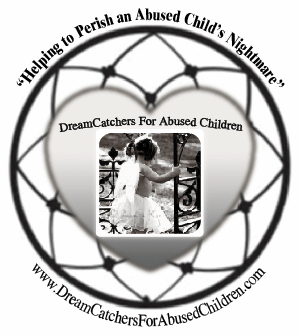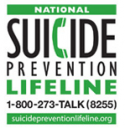 Since 1985, April has been nationally recognized as Child Abuse Prevention Month. Each year, there are nearly 3 million reports of child abuse and neglect. And we know that child abuse cases are vastly under-reported, as adults often fail to recognize or respond to warning signs of child abuse, and abused children suffer in fear and silence. National Child Abuse Prevention Month offers a powerful opportunity to highlight child abuse facts, explain the importance of reporting child abuse, encourage community involvement, and support abused children.
Since 1985, April has been nationally recognized as Child Abuse Prevention Month. Each year, there are nearly 3 million reports of child abuse and neglect. And we know that child abuse cases are vastly under-reported, as adults often fail to recognize or respond to warning signs of child abuse, and abused children suffer in fear and silence. National Child Abuse Prevention Month offers a powerful opportunity to highlight child abuse facts, explain the importance of reporting child abuse, encourage community involvement, and support abused children.
DID YOU KNOW?
*1 in every 3 girls will be sexually molested before the age of 18
*1 in every 5 boys will be sexually molested before the age of 18
*Every 10 SECONDS a child is raped or killed in the U.S.
*Today up to 5 children will die from abuse or neglect
*In 13 seconds, another child will be abused in the U.S
*There were 2.9 million child abuse reports made in 1992
*ONLY 28% of the children identified as harmed by abuse are investigated
*Boys are at a greater risk of serious injury and of emotional neglect than are girls
*85% of the 1.2 – 1.5 million runaways are fleeing abuse at home
*80% of perpetrators are biological parents
*60 % of male survivors report at least one of their perpetrators to be female
*Children in mother-only households are 4 times more likely to be fatally abused
*Female abusers are typically younger than male abusers.
*The median age was 30 years for women and 33 years for men
*Today 6 children will commit suicide
*Suicide is the 3rd leading cause of death (ages 15-24)
*Untreated child abuse increases the likelihood of arrest for a violent crime by 38 percent
*60 MILLION survivors are former victims of child sexual abuse in America today
*71 % of child sex offenders are under the age of 35
*38% of women & 20% of men have been sexually abused during adolescence
*It is estimated that 3%-6% of the clergy population has abused a child
*Natural mothers are the perpetrators of 93% of physical neglect, 86% educational neglect, 78% emotional neglect, 60% physical abuse, 55% emotional abuse.
*The typical pedophile molests an average of 117 children–most of whom do not report the offense
~Imagine the outcry if these statistics represented a disease, which was wiping out 5 children per day, victimizing millions, and who’s by-products where disabilities & expanding violence. Youth rights are really about human rights, and simple empathy is a giant first step to the benefits of increased awareness. The high jump in child abuse statistics shows the importance of youth rights by showing cases of frightening lack of knowledge!!~
Go ahead….
IT’S TIME TO GET ANGRY ABOUT CHILD ABUSE IN OUR NATION!!
________________________________________________________________
Take Action

Take action to support healthy child development and help prevent child abuse and neglect in both big ways and small. Whether you donate to Prevent Child Abuse America, participate in one of our fundraising events, or join us by contacting your local office, your contribution makes a difference.
What can you do right now? Anything you do to support kids and parents can help reduce the isolation and stress that often leads to abuse and neglect.
Join our 1st Ever ONLINE CYBER-MARCH AGAINST CHILD ABUSE
DONATE Here
Purchase a STOP CHILD ABUSE Bracelet (Promo: Buy one, Get one 3/25/2017 – 4/30/2017)
Purchase a Child Sex Abuse Educational Activity Book (Promo: Buy one, Get a free bracelet)
Create a PINWHEEL Garden in your community!!
Be a friend to a parent you know. Ask how their children are doing. Draw on your own experiences to provide reassurance and support. If a parent seems to be struggling, offer to baby-sit or run errands, or just lend a friendly ear. Show you understand.
Be a friend to a child you know. Remember their names. Smile when you talk with them. Ask them about their day at school. Send them a card in the mail. Show you care.
Talk to your neighbors about looking out for one another’s children. Encourage a supportive spirit among parents in your apartment building or on your block. Show that you are involved.
Give your used clothing, furniture and toys for use by another family. This can help relieve the stress of financial burdens that parents sometimes take out on their kids.
Volunteer your time and money for programs in your community that support children and families, such as parent support groups, child care centers, and our state chapters and local Healthy Families America sites.
Advocate for public policies, innovative programs and issues that benefit children and families.
Ask your school/community/club/co-workers to participate in a WEAR BLUE DAY!
More Ways “YOU” Can Help
________________________________________________________________
Child Maltreatment is Preventable
CDC works to stop child maltreatment, including abuse and neglect, before it initially occurs. In doing this, CDC promotes the development of safe, stable, and nurturing relationships and environments between children and their parents or caregivers. Children’s experiences are defined through their environments (such as homes, schools, and neighborhoods) and relationships with parents, teachers, and other caregivers. Healthy relationships act as a buffer against adverse childhood experiences. They are necessary to ensure the long-term physical and emotional well-being of children.
Join CDC’s Initiative to Prevent Child Maltreatment
Safe, stable, and nurturing relationships and environments are essential to prevent child maltreatment and to assure children reach their full potential. The Essentials for Childhood initiative has a technical package that proposes evidence-based strategies communities can consider to promote relationships and environments that help children grow up to be healthy and productive citizens.
The Essentials for Childhood technical package is intended for communities committed to the positive development of children and families, and specifically to prevent child abuse and neglect. While child maltreatment is a significant public health problem, it is also a preventable one. The steps suggested in the Essentials for Childhood technical package—along with your commitment to preventing child maltreatment—can help create neighborhoods, communities, and a world in which every child can thrive.
Downloadable Materials
Web-based Resources
Online Training
The Department of Justice Office for Victims of Crime outlines strategies for how to respond if a child tells you that he or she has been abused.
Click Here for information about child maltreatment and ways to prevent it in your home, school and neighborhood. The packet is compiled by our Families Are Magic Coordinator with the latest and most effective information and activities to empower community members to fight child abuse and neglect.
National Child Abuse Prevention Month: Resources
Purchase a STOP CHILD ABUSE Blue Silicone Bracelet – Show your support by wearing this stylish bracelet.
Purchase Pinwheels for Prevention – The pinwheel is the nationally recognized symbol for child abuse and neglect prevention. It also symbolizes the belief that every child has the right to grow and flourish to his/her full potential within a nurturing environment.
Child Welfare Information Gateway
What can you do to help?
- Use your voice! Call immediately to report known or suspected child abuse and neglect.
- Get educated. Learn to identify the subtle signs of child abuse and neglect.
- Get involved. Contact your local CAS to participate and show your support.
- Learn more. Visit our website to learn more on child abuse.
- Be a better parent. Work on being more understanding, patient and kind.
- Know your duty. It’s our moral, legal and ethical duty to report child abuse.
- Discipline without punishment. Learn how to discipline your child without using physical force from the article, Yes, You Can! – Positive discipline ideas for you and your child.





































![Validate my RSS feed [Valid RSS]](http://dreamcatchersforabusedchildren.com/wp-content/uploads/2009/10/valid-rss.png)












